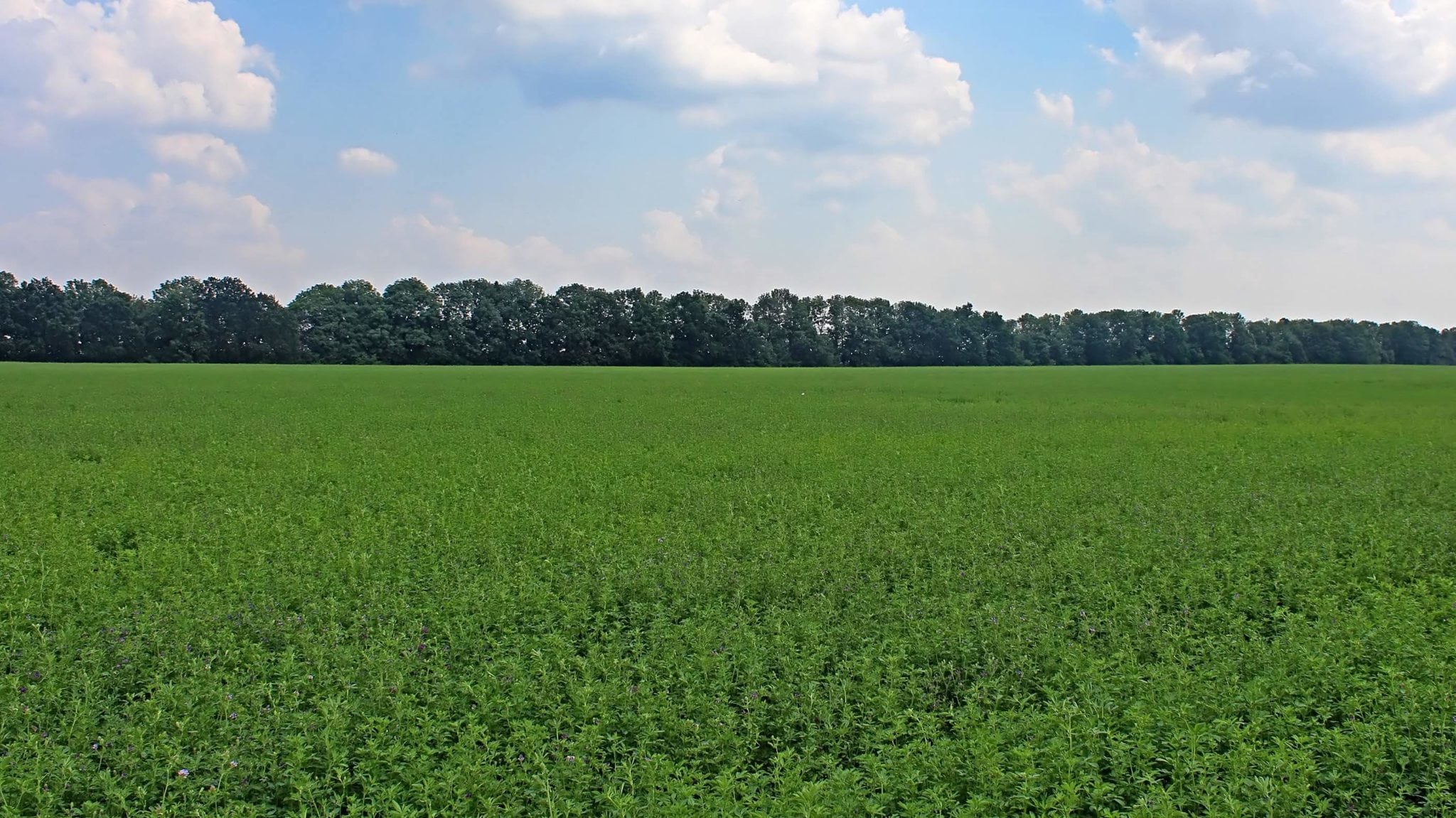Menu
Alfalfa Tuneup
As the soil temps begin to rise and alfalfa comes out of dormancy, it’s a great time to take a walk and evaluate your alfalfa stands. High yields start with thick healthy stands. One-year-old stands should have 12-25 plants per square foot, two-year-old stands 8-12 plants per square foot, and 3+ year old stands should have a minimum of 5 plants per square foot, to maximize yields. Another way you can evaluate your stand is to do stem counts when the alfalfa is 4″ to 6″ in height. Stem counts above 55 per square foot, will allow you to achieve maximum yields. Once the stem count drops below 40 per square foot, it is time to rotate out of alfalfa.

View of green lucerne field under blue sky
As you walk your fields, take a moment to observe root and shoot health. Dig up a few crowns and slice open the tap root. Look to see if the inside of the root is creamy white. Off colored roots may indicate the presence of disease. Heavy wheel traffic can crush or split crowns, leaving them susceptible to disease or decay which will shorten stand life.
A good fertility program for alfalfa starts with maintaining a soil pH between 6.5 and 7.0. A soil pH above 7.0 may cause some micronutrient shortages to occur. Alfalfa requires a lot of Potassium to maximize yields. For every ton of dry forage you harvest, you remove 60-70 lbs of potash from the field, making it necessary to provide ample potash levels to the soil in support of high yields throughout the life of the stand. Excessively high potash levels within the soil can reduce the availability of some key micronutrients like Zinc, Copper, and Manganese. Phosphorus is also an important element for alfalfa. Each ton of dry hay removes 12-15 lbs of phosphorus from the soil. It is important to remember if soil pH drops below 6.5, that reduces the amount of phosphorus that is available to the alfalfa plant.
Calcium, Magnesium, and Sulfur are secondary nutrients that are also very important in alfalfa production. Most times the amount of lime needed to maintain the required pH gives us the amount of calcium needed for optimum yields. Magnesium also correlates to soil pH; however, in low CEC soils, Magnesium availability may be limited. Magnesium helps to carry nutrients within the plant like, potassium, sugars, and starch. Magnesium is also critical for chlorophyll and enzyme production within the plant. Alfalfa uses about 30 lbs of elemental Sulfur per season, much of it coming from the soil structure. Sulfur is a catalyst to chlorophyll production and is a structural component to protein formation. With less Sulfur being deposited by industrial sources, Sulfur is an element we need to monitor more closely.
Boron is widely recognized as a critical micronutrient in alfalfa production. Compounding the Boron issue, is the fact that soil pH above 6.5 ties up the boron, making it less available to the plant. Boron is also highly soluble and mobile within the soil. High organic matter soils help to hold the nutrient longer. Growers have resolved these issues over the years by making foliar applications of products like BORPOWER multiple times throughout the growing season. Alfalfa needs 2-3 lbs of elemental boron per growing season, some of which is pulled from the soil.
ALFAPOWER MP is a product formulated to meet the micronutrient needs in alfalfa production like Copper, Manganese, and Zinc. Copper improves the respiration within the plant. Manganese improves the assimilation of carbon dioxide and nitrates into the plant, helping to produce chlorophyll and protein. Zinc stimulates the production of auxins within the plant, acting as a growth promoter. Zinc also regulates the flow of sugars to the growing point of the plant.
As you look for ways to improve your alfalfa yields, it’s always important to maintain a proper balance in soil fertility. Start strong by building a good fertility base prior to stand establishment, and then feed the crop to maximize productivity, throughout the life of the stand.
© PowerAG.com - All Rights Reserved.

